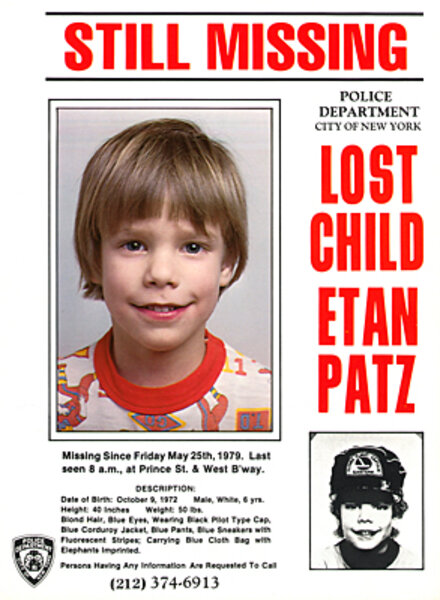Etan Patz killing: Motive is a puzzle for police, and potentially, a jury
Loading...
| Atlanta
Pedro Hernandez appeared "relieved" this week, police said, as he retraced for the record how he allegedly abducted and killed 6-year-old Etan Patz on May 25, 1979, an event that set into motion the missing children’s movement and caused a generation of American parents to keep tighter reins on their kids.
But while the outwardly quiet New Jersey man unburdened his dark, 33-year-old secret to investigators, Mr. Hernandez has only partially answered perhaps the most important question of all: Why?
Police say Hernandez, a disabled construction worker, has not given them a definitive motive, only that as a then-18-year-old he “felt the urge to kill” after identifying Etan, who was on his way alone to the bus stop for the first time, as “the one.”
Early Friday, psychologists in a secure wing of Bellevue Hospital reportedly questioned Hernandez about his mental state. Hernandez had been scheduled to be arraigned on second-degree murder charges in a New York district court on Friday, but according to ABC News, the arraignment was moved to his hospital room where is under suicide watch.
Hernandez had told investigators he used a soda to lure the towheaded 6-year-old into the basement of a bodega where he worked as a stock clerk. While there are some conflicting reports, the Associated Press quotes a source as saying that Hernandez claims to have suffocated the boy before placing the body in a box in a SoHo alleyway.
Police say there’s no evidence to support sexual assault as a motive, and family and friends have described Hernandez as being “hot blooded” and at-times unpredictable, especially in his younger days. While he had some financial and marital troubles since the killing, he doesn’t have a criminal record.
Hernandez’ alleged motive is important for several reasons, not the least of which is the 33-year search for closure by Julie and Stan Patz, who have for the past decade blamed another man, convicted pedophile Jose Ramos, for Etan’s disappearance. When the case was reopened in 2010, there were 10 top suspects. Hernandez was not on that list.
The parents’ pain never quite faded, even as they had Etan officially declared deceased in 2001. For years they refused to move or change their phone number, in case Etan was still trying to find his way home.
Police say they received a tip about Hernandez from a non-family member whose conscience was jogged by last month’s fruitless excavation of a nearby basement, where police thought Patz may have been buried.
Over the years, Hernandez had allegedly told several people about having “done a bad thing and killed a child in New York.” Recently diagnosed with a serious disease, Hernandez, now 51, may have been ready to clear his conscience, some have surmised.
But other investigators say they’re troubled by those explanations.
The partial motive – no sexual assault, but a lash of anger – seems to some behavioral scientists implausible, “raising more questions than answers,” says Mark Safarik, a former FBI profiler and currently a consultant with Forensic Behavioral Services, in Fredericksburg, Va.
“I’m a little concerned about at least the motive that they’ve put out,” he says. “You don’t abduct six-year-old boys because you’re angry. If he abducts and kills the boy without sexually assaulting him, he would be a real outlier.”
At the same time, behavioral scientists say motives, especially around violent crimes, can remain elusive, especially in a case like the Patz abduction, where the the only apparent witness is the alleged killer. Whether police can build a solid evidentiary case around Hernandez’ confession is far from certain, especially if the jury can’t with any certainty weigh why Hernandez might have done such a thing.
“Behavioral scientists correctly [recognize] that it is hard to obtain an accurate account of the motivations of persons by simply asking them what their motivations are or were,” reads a paper on criminal behavior published in the Journal of the Oklahoma Criminal Justice Research Consortium. “Not only may persons be unwilling to provide an honest account, but frequently they will not even be able to explain their actions to themselves. These problems … would appear to be particularly great with violent criminal behavior.”
Patz’ disappearance on his first walk alone to school; his toothy, tow-headed mug – one of the first to appear on milk cartons; and the massive publicity around what became a decades-long search for what happened helped fuel the missing children’s movement in America, and also helped give rise to what some have called an extreme climate of parental fear and cloistered childhoods.









